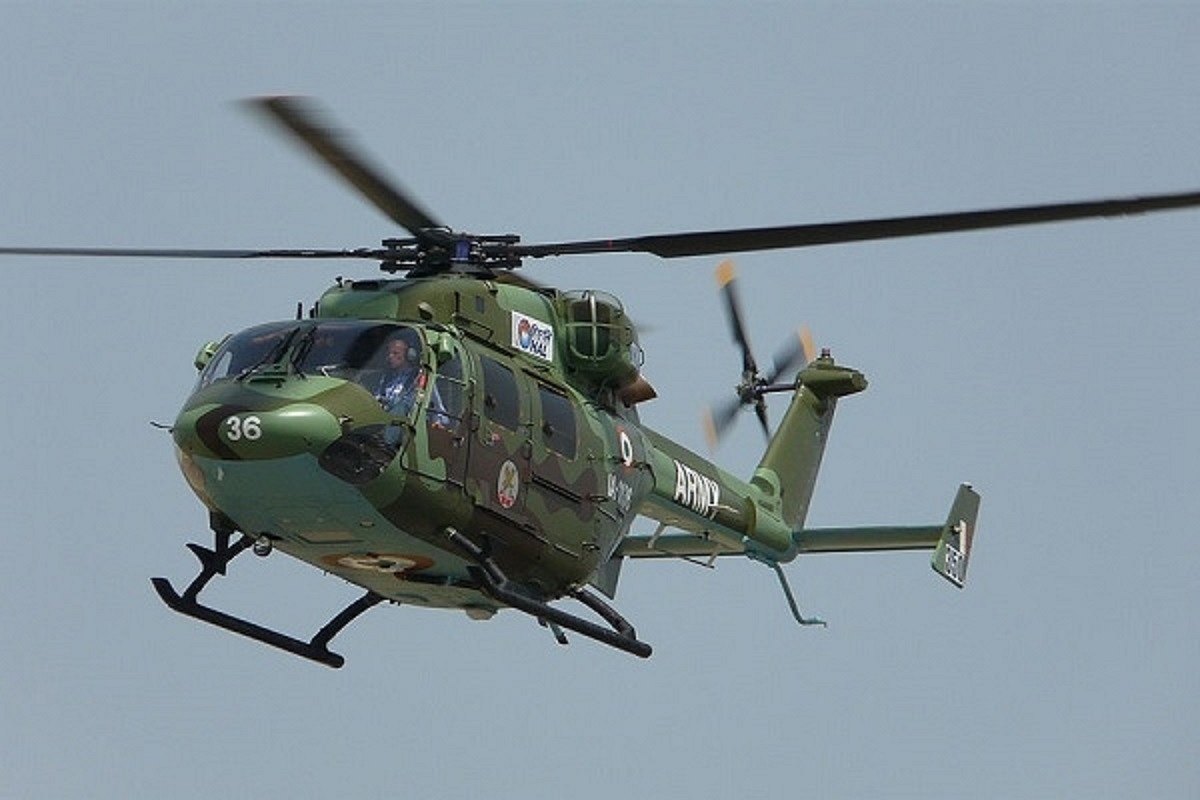Defence
ALH Dhruv Back To Flying As HAL Identifies Design And Metallurgical Flaws: Report

An Indian Army Dhruv helicopter (Representative Image) (Pic by Neuwieser/Wikipedia)
Hindustan Aeronautics Limited (HAL) has, along with the three armed forces, identified design flaws and is fixing them that caused Advanced Light Helicopter (ALH) Dhruv to crash three times in under three months.
Interestingly, ALH Dhruv is back in action for operational missions after the armed forces cleared it last month (31 May) for emergency operations only.
According to the Print's report, the collective of the ALH Dhruv, which controls the power to the rotors has a design and metallurgical flaw.
An official, confirming that the issue was due to both a design flaw and a metallurgical flaw, said "it is a mix of both."
The official said, "It was found that certain parts are showing higher fatigue than what the time frame is, adding that normally this particular part has a flying life of about 400 hours, after which it is serviced or replaced."
However, if the fatigue develops much before that, then the flying life has to be reduced so that necessary replacement or service can be done in time, the official added.
Earlier, the ALH Dhruv crashed three times within a span of three months.
The string of crashes prompted the Bengaluru-based Centre for Military Airworthiness and Certification (CEMILAC) to launch a design review of the helicopter's booster control rods (collective).
The design review highlighted the drastic reduction in the fatigue life of the aluminum rods, happening due to an assembly error of serrated washers in the booster control rods.
“The drastic reduction in the fatigue life of the aluminum-made control rod with wrongly assembled serrated washers has been verified experimentally at Rotary Wing Research and Design Centre (RWR&DC), HAL as part of the committee’s investigation,” CEMILAC then said in the letter addressed to all the services.
Following the result of the design review, Hindustan Aeronautics Limited (HAL) on 15 May, decided to change the troubling Aluminum-made control rods to steel control rods.
Steel rods will be easier for maintenance, officials said, adding that the replacement program will commence shortly and is expected to take one-year to complete.
It is worth noting, that the three services and the Coast-Guard combined operates more than 330 ALHs and its variants.
The ALH is critical for supporting operations in the high-altitude regions of Himalayas, since it is the only helicopter in Indian inventory that can operate satisfactorily in areas above 18,000 feet, apart from the vintage Cheetah and Chetak helicopters.
Support Swarajya's 50 Ground Reports Project & Sponsor A Story
Every general election Swarajya does a 50 ground reports project.
Aimed only at serious readers and those who appreciate the nuances of political undercurrents, the project provides a sense of India's electoral landscape. As you know, these reports are produced after considerable investment of travel, time and effort on the ground.
This time too we've kicked off the project in style and have covered over 30 constituencies already. If you're someone who appreciates such work and have enjoyed our coverage please consider sponsoring a ground report for just Rs 2999 to Rs 19,999 - it goes a long way in helping us produce more quality reportage.
You can also back this project by becoming a subscriber for as little as Rs 999 - so do click on this links and choose a plan that suits you and back us.
Click below to contribute.
Latest